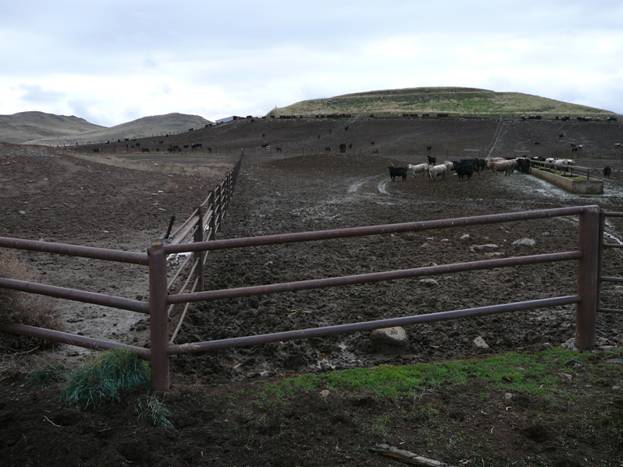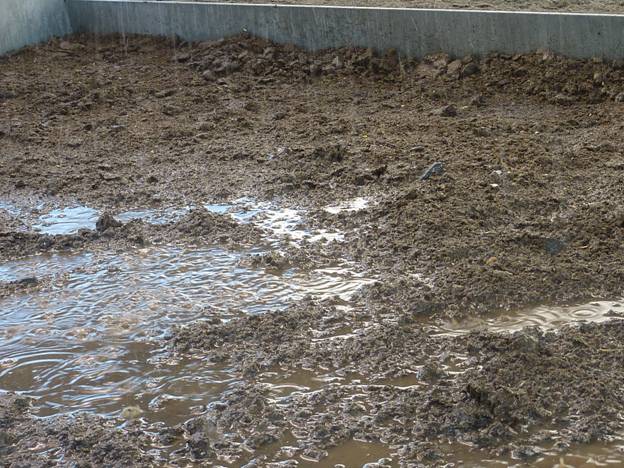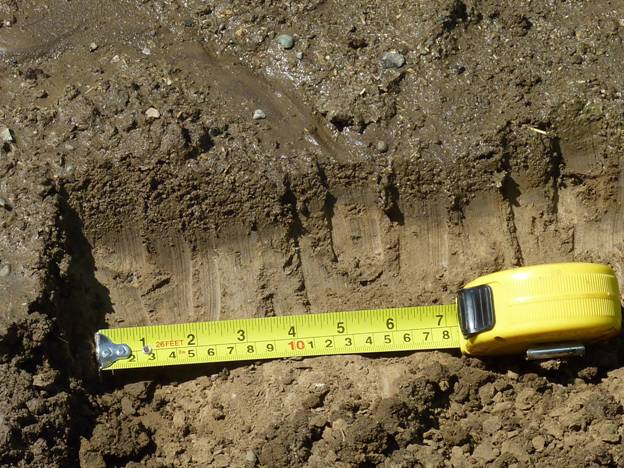Grantee Research Project Results
Final Report: Transport and Transformation of Natural and Synthetic Steroid Hormones at Beef Cattle and Dairy Concentrated Animal Feeding Operations (CAFOs)
EPA Grant Number: R833422Title: Transport and Transformation of Natural and Synthetic Steroid Hormones at Beef Cattle and Dairy Concentrated Animal Feeding Operations (CAFOs)
Investigators: Sedlak, David L. , Kolodziej, Edward P. , Harter, Thomas
Institution: University of California - Berkeley , University of California - Davis , University of Nevada - Reno
EPA Project Officer: Aja, Hayley
Project Period: October 1, 2007 through September 30, 2010 (Extended to September 30, 2012)
Project Amount: $698,103
RFA: Fate and Effects of Hormones in Waste from Concentrated Animal Feeding Operations (CAFOS) (2006) RFA Text | Recipients Lists
Research Category: Endocrine Disruptors , Human Health , Safer Chemicals
Objective:
The objectives of the project were to assess the occurrence, fate, and transport of synthetic and endogenous steroid hormones across major operational units (i.e., feedlots or corrals, storage areas/lagoons, and land application area) of beef and dairy cattle CAFOs and all major hydrologic compartments of interest: surface water runoff, soil leachate, and groundwater. The research was designed to test the overarching hypothesis that the most important hydrologic pathways for steroid releases from CAFOs are overland stormwater runoff from animal feeding areas and overflows from animal waste storage lagoons. With the exception of concentrated sources of steroids, such as animal waste lagoons, natural attenuation processes in groundwater were hypothesized to be capable of reducing concentrations of steroids below thresholds for ecological effects. The importance of surface water transport processes in determining steroid releases provides the potential for managing CAFOs in a manner that controls the release of steroids by exploiting attenuation processes that occur naturally in soil and groundwater.
To test these hypotheses, our research addressed several specific objectives. In the initial phase of the project, sensitive and accurate analytical methods were developed for quantification of synthetic steroid hormones used as growth promoters in beef cattle. Previously developed techniques for analysis of natural steroid hormones were adapted to provide accurate and precise quantification of steroids in complex matrices, such as those encountered at CAFOs. These sensitive methods were then used to assess the occurrence of synthetic and endogenous estrogens, androgens, and progestins in wastes from beef and dairy cattle CAFOs. Following characterization of the wastes, controlled runoff experiments were conducted by applying simulated rainfall to a test-plot where hormone-implanted cattle were held for several months. These data were supplemented by analysis of samples from CAFO groundwater, CAFO tile drains, and a full-scale CAFO with several runoff treatment processes as best management practices (BMPs).
Summary/Accomplishments (Outputs/Outcomes):
The presence of steroid hormones in runoff from CAFOs is a concern because sensitive fish species can be adversely affected by exposure to extremely low concentrations (e.g., 17ß-estradiol can feminize certain fish species at concentrations below 10 ng/L). The development of a better understanding of the sources and fate of steroid hormones in CAFOs has been limited by the absence of sensitive and precise methods for quantifying steroids in a complex matrix, such as that found in manure, CAFO soils and particle-laden runoff.
One important class of steroid hormones in CAFO runoff is the synthetic androgens. Prior to our research, it was extremely difficult to detect androgens in CAFOs. To diversify the suite of analytical techniques utilized for steroid hormone analysis, a sensitive new gas chromatography/tandem mass spectrometry (GC/MS-MS) method was developed for analysis of the synthetic androgens 17α-trenbolone, 17ß-trenbolone, and trendione, and melengestrol acetate in water samples. To provide a basis for monitoring steroids in manure, soil and particle-laden CAFO runoff, a solids extraction method was developed for the GC/MS-MS method for synthetic steroids and a previously developed method for natural steroids (Mansell, et al., 2011). These accurate and precise methods provided a basis for quantitative studies of steroid source and fate at CAFOs. The methods, which are among the most sensitive and robust techniques available for analysis of these compounds, could be modified for use in routine monitoring programs or in studies designed to assess the efficacy of various best management practices.
The new analytical methods were applied to the characterization of wastes produced at CAFOs. Beef cattle treated with the synthetic androgen, trenbolone acetate, excreted the metabolites, 17α-trenbolone and 17ß-trenbolone, with higher concentrations observed immediately in samples collected over a period of approximately 2 months after the animals were implanted. Neither trenbolone acetate nor the metabolite trendione were detected in the manure. The beef cattle also excreted natural steroid hormones, with 17α-estradiol and testosterone serving as the predominant compounds detected in fresh manure. Concentrations of naturally occurring steroid hormones detected in manure did not differ substantially from those reported for cattle that had not been implanted with trenbolone acetate (Webster, et al., 2012.)
The concentrations of steroid hormones changed after the manure was excreted. Experiments conducted at an experiment feedlot located in Davis, California, demonstrated the transformation of steroid hormones as the manure was mixed into the CAFO soil and subjected to microbial activity. Concentrations of the synthetic androgen metabolites in the CAFO soils decreased after excretion as the implants were used up and microbial transformation reactions in the soil resulted in loss of the compounds; concentrations of androgen metabolites decreased below method detection limits within 160 days after the implanted cattle were released. The natural hormones also showed evidence of transformation reactions in the CAFO soils. 17α-estradiol was converted into estrone and 17ß-estradiol. Testosterone rapidly disappeared and concentrations of progesterone and androstenedione were increased on the feedlots. The rate of steroid hormone transformation was apparently affected by the moisture content of the soil; transformation rates slowed as microbial activity decreased under hot, dry summer conditions.
The analysis of manure and CAFO soils provided new insight into processes that affect steroid hormone concentrations and their potential for release to surface waters. For synthetic androgens, the metabolites, 17α-trenbolone and 17ß-trenbolone are the forms of the compound most likely to be released to surface waters. If runoff from the site can be held for a period of several months after cattle receive implants, concentrations of these compounds should decrease substantially. For the natural hormones, the data indicate that estrogens are relatively stable after excretion while testosterone is rapidly transformed. Progesterone and androstenedione, two steroids that are not present at significant quantities in manure, are produced in CAFO soils as the microbes transform the steroids. The relatively high stability of these steroids suggests that they could be released to surface waters.
Following aging of the steroid hormones on the experimental feedlot, a rainfall simulator was used to mimic the conditions that occur when CAFOs are subjected to precipitation. Samples of runoff from the section of the feedlot where the rainfall simulator was being operated were collected through a movable weir structure. Samples collected at different times during the period when runoff was produced were filtered and analyzed for steroid hormones and water quality parameters. Metabolites of the synthetic androgen trenbolone acetate were detected consistently in runoff with typical concentrations ranging from 10-20 ng/L, which is comparable to concentrations of naturally occurring steroids. Attempts to close the mass balance on the androgens were complicated by difficulties in obtaining acceptable recoveries in the complex matrix. In our studies, we observed substantial differences and variability in the estimated recovery of steroids spiked in CAFO runoff for QA/QC purposes as compared to the steroids initially present in these matrices, likely due to interactions with organic matter and mineral phases or substantial biotransformation capacity. These results suggest especially challenging conditions for QA/QC assessment in agricultural runoff, and standard QA/QC procedures may not always provide accurate assessment of contaminant fate in these systems
Nonetheless, the data suggest that the most of the metabolites remained behind in the site soils and could be mobilized in subsequent rainfall events. The natural hormones also were detected in runoff from the test plots, with concentrations typically ranging from 50-100 ng/L for 17α-estradiol, androstenedione and progesterone. Concentrations of 17ß-estradiol, testosterone and estrone were considerably lower, with typical concentrations ranging from 10-20 ng/L.
One of the outcomes of these study efforts was the conceptual development of a mass balance approach that could be used to roughly predict exposure concentrations in receiving water potentially affected by animal agriculture operations. Careful comparisons of data (available in these studies and other published studies) concerning the stocking density, steroid mass excreted, soil transformation rates, and mass leached from animal wastes with projected rainfall amounts can yield estimates of steroid concentrations in runoff from animal agriculture operations. After accounting for the dilution capacity in receiving waters, it is easy to estimate the expected exposure concentration of steroids and predict the potential environmental risk arising from instances of incidental runoff. Using this approach, we propose that it is likely possible to identify receiving waters at particularly high risk for steroidal endocrine disruption (suggesting stringent runoff control and mitigation measures are necessary) or alternatively, low risk scenarios for steroidal endocrine disruption (suggesting limited runoff control or mitigation is required). This type of approach could be used to guide the implementation of runoff control and treatment technologies with respect to potential steroidal transport, as it is unlikely that a one size fits all approach is optimal for runoff control for animal agriculture.
Microcosm experiments consisting of manure and soil slurries amended with steroid hormones were used to provide additional insight into the microbial transformation processes occurring on feedlots. In these studies, complete transformation of testosterone and progesterone and partial transformation of 17ß-estradiol occurred within 24 hours. After 24 hours, the transformation of 17ß-estradiol ceased when manure was present at concentrations typical of feedlot soils and runoff. Stabilization of 17ß-estradiol may have been due to partitioning of the compound into organic matter in the manure or changes in the microbial community caused by the presence of labile organic carbon from the manure. The rate of transformation of all three classes of steroids was faster in microcosms where steroids were added to facilitate quantification, suggesting that, under field conditions, steroids may be more stable than predicted by experiments employing steroid amendments. The microcosm studies indicated that under conditions encountered in feedlots and manure-applied fields, androgens and progesterone are likely to be transformed on the field or in runoff while estrogens likely persist long enough to be released to surface waters.
To further assess the fate and transport of synthetic and steroid hormones, we developed a hormone transport and fate model specifically for CAFO corral surfaces, based on a previously established approach. The conceptual model considered the compacted soils underlying the unconsolidated or uncompacted soil layer that is a mix of dried manure and unconsolidated soil particles eroded from the compacted layer below and mixed into the manure through animal hoof action. The governing equations for each sub-model domain were solved numerically in the exchange layer model using the Crank-Nicolson implicit, finite-difference method. Solute concentrations for both the modeled and measured data were normalized according to the initial chemical concentration in the manure-soil layer (MSL). This conversion allowed for comparisons between the model and plot datasets since the initial concentrations, indicated by the soils analysis, were observed to vary between each plot and between solutes.
The model was calibrated against chloride data measured in the compacted soil substrate, in the manure-soil layer (MSL), and measured in surface runoff. The model reproduced the dynamics of the chloride breakthrough curve reasonably well for the runoff at the outlet of the UCD beef lot experiments. Using literature-reported sorption rates for hormones, the model was then used to predict hormone concentrations in surface runoff given the amount of precipitation during the plot experiments. While the model predicted the general dynamics of hormone transport in surface runoff, the model consistently underpredicted the high hormone concentrations observed in the field plot experiments, typically by as much as two orders of magnitude. The discrepancy is thought to be due to a significantly more rapid exchange of water between the USL and the free-flowing sheet flow. However, these effects also apply to salts sorbed to manure and are largely captured by the calibration process. A second, perhaps more important, factor is the transport of hormones sorbed to suspended solids. Our model did not account for such effects, which may explain the consistent underprediction by the model.
Careful comparisons of data (available in these studies and other published studies) concerning the stocking density, steroid mass excreted, soil transformation rates, and mass leached from animal wastes with projected rainfall amounts can yield estimates of steroid concentrations in runoff from animal agriculture operations. After accounting for the dilution capacity in receiving waters, it is easy to estimate the expected exposure concentration of steroids and predict the potential environmental risk arising from instances of incidental runoff. Using this approach, we propose that it may be possible to identify receiving waters at particularly high risk for steroidal endocrine disruption (suggesting stringent runoff control and mitigation measures are necessary) or alternatively, low risk scenarios for steroidal endocrine disruption (suggesting limited runoff control or mitigation is required). This type of approach could be used to guide the implementation of runoff control and treatment technologies with respect to potential steroidal transport, as it is unlikely that a one size fits all approach is optimal for runoff control for animal agriculture.
To verify findings from the model and test-plot study, samples were collected from full-scale feedlots and CAFOs in California and Iowa. Analysis of runoff samples collected from CAFOs in California from 2008-2011 produced findings that were consistent with data from the test-plot studies. Mean concentrations of 17α-estradiol, androstenedione and progesterone were within a factor of 3 of the mean values observed in the test-plots (i.e., 50, 310 and 120 ng/L, respectively). As expected on the basis of the test-plot results, mean concentrations of 17ß-estradiol and testosterone were much lower than those of the other steroids (i.e., 12 and 3 ng/L, respectively). Concentrations of estrone were higher than expected, with a mean value (i.e., 120 ng/L) exceeding that of 17α-estradiol. A similar trend was observed in runoff from a CAFO in Iowa, with 17α-estradiol, androstenedione, progesterone dominated the profile of steroids in the plot runoff. Partial removal of steroids was observed in a settling basin as particle-associated steroids were removed. After passage through a vegetated infiltration basin, concentrations of all of the steroids except estrone were below the method detection limit. Synthetic androgens were not analyzed at these sites because animals had not been implanted with growth hormones.
Figure 1. This photograph illustrates one of the field sites in Northern California where runoff was collected.
Figure 2. This photo shows the test-plot being subjected to simulated rainfall during the runoff studies.
Figure 3.This photograph illustrates the surficial soil and underlying clay layer at the test-plot where controlled runoff studies were conducted. Water and steroid hormones did not leach to groundwater due to the low-permeability clay layer.
Conclusions:
Analysis of samples from groundwater wells and a tile drain system in an area where CAFO runoff and manure was applied indicated efficient removal of steroid hormones in groundwater. Estrone and androstenedione, two of the more polar and recalcitrant steroids were detected at concentrations less than 10 ng/L were detected in fewer than 10% of the samples. Based on these results, we predict only a very limited transport potential for steroid hormones in most subsurface systems, and it is likely that subsurface transport provides an effective attenuation mechanism for most steroid hormones. Thus, it may be possible to use mitigation technologies such as riverbank infiltration, or other treatment technologies utilizing high solids concentration, biological activity, and long hydraulic retention times to attenuate steroid concentrations in high-risk locations.
Journal Articles on this Report : 3 Displayed | Download in RIS Format
| Other project views: | All 21 publications | 3 publications in selected types | All 3 journal articles |
|---|
| Type | Citation | ||
|---|---|---|---|
|
|
Mansell DS, Bryson RJ, Harter T, Webster JP, Kolodziej EP, Sedlak DL. Fate of endogenous steroid hormones in steer feedlots under simulated rainfall-induced runoff. Environmental Science & Technology 2011;45(20):8811-8818. |
R833422 (2011) R833422 (Final) |
Exit |
|
|
Parker JA, Webster JP, Kover SC, Kolodziej EP. Analysis of trenbolone acetate metabolites and melengestrol in environmental matrices using gas chromatography-tandem mass spectrometry. Talanta 2012;99:238-246. |
R833422 (Final) |
Exit Exit Exit |
|
|
Webster JP, Kover SC, Bryson RJ, Harter T, Mansell DS, Sedlak DL, Kolodziej EP. Occurrence of trenbolone acetate metabolites in simulated confined animal feeding operation (CAFO) runoff. Environmental Science & Technology 2012;46(7):3803-3810. |
R833422 (2011) R833422 (Final) |
Exit |
Supplemental Keywords:
Estradiol, estrogen, endocrine disruption, Health, RFA, Scientific Discipline, Environmental Chemistry, Endocrine Disruptors - Human Health, endocrine disruptors, Biochemistry, Endocrine Disruptors - Environmental Exposure & Risk, concentrated animal feeding operations, EDCs, animal feeding operations, endocrine disrupting chemicals, CAFOsRelevant Websites:
Groundwater Information & Educational Resources Exit
Progress and Final Reports:
Original AbstractThe perspectives, information and conclusions conveyed in research project abstracts, progress reports, final reports, journal abstracts and journal publications convey the viewpoints of the principal investigator and may not represent the views and policies of ORD and EPA. Conclusions drawn by the principal investigators have not been reviewed by the Agency.
Project Research Results
- 2011 Progress Report
- 2010 Progress Report
- 2009 Progress Report
- 2008 Progress Report
- Original Abstract
3 journal articles for this project



